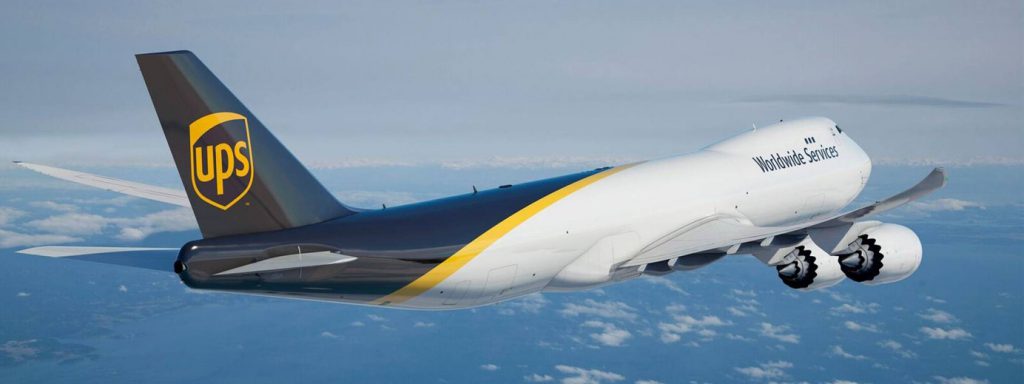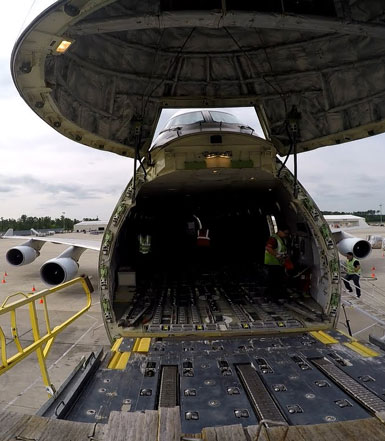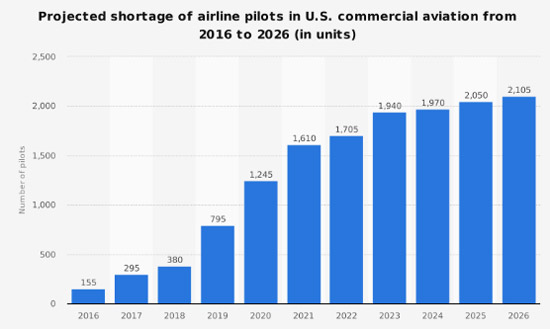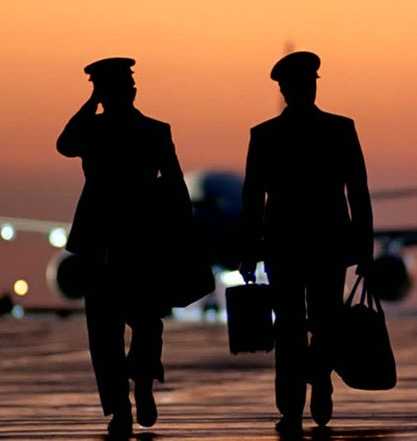Cargo Pilot Jobs

Though not as glamorous as their airline counterparts working as a cargo pilot can be a rewarding, stable, and financially lucrative career path.
There is a myth that cargo pilots fly crap airplanes in the middle of the night. On the contrary, there are many options in schedules. From flying multi-week trips around the world to being home every night there are schedules available in cargo flying to fit most needs.
Cargo airplanes can range from tired old piston airplanes all the way up to advanced jumbo jets that are sometimes more technologically advanced than their airline counterparts.
Cargo pilot jobs are more stable than other pilot positions, there isn’t as much boom/busts that occur with economic cycles. Compensation remains more stable than other flying sectors as well and can range pretty high with some companies.
Part 121 vs Part 135 Cargo Flying
There exists such a wide variety in cargo flying partly from the wide variety in demand, but also from the variety of different regulations it can be operated under within the United States.
Larger cargo aircraft fly under Part 121 of the federal aviation regulations (FARs), the same regulations as the airlines. Flying for these employers is similar working conditions and environment as working for an airline.
There is a part of cargo flying that is operated under Part 135 of the FARs, the same regulations as charter airplanes. Part 135 regulations are less restrictive and require less support infrastructure than Part 121. There is a limit on the size of airplane that can be flown Part 135, and this is why cargo operators are split between the two regulations. Part 135 cargo planes are often the tired old airplanes many envision when they think of cargo, but well cared for and technologically advanced planes are common as well.
Part 135 cargo flying is often considered a stepping stone in a pilot’s career and can be an entry level cargo pilot job. Though just as often the ranks of Part 135 operators are often filled with pilots making it their career.
Description of the Job
Cargo pilots are responsible for operating airplanes to carry out the mission of moving freight. A pilot will typically fly one type of airplane at a time. Part 121 cargo airplanes are flown by a captain and a first officer. Some operators will have long haul flights that require additional relief pilots. Part 135 cargo airplanes are usually flown by just one pilot, though there are some airplanes or circumstances that will require a two pilot crew.

Cargo pilots responsibilities are similar to airline pilot responsibilities:
- Maintain knowledge of company policies and procedures and government regulations pertaining to their job.
- Attend recurrent training and testing.
- Ensuring personal fitness for flight and compliance with mandated rest requirements.
- Checking weather before each flight.
- For Part 121 pilots coordinate with company dispatchers on operational information pertinent to the flight. Part 135 cargo operations typically don’t have dispatchers available to assist the pilots.
- Verify the aircraft is within weight and balance limits.
- Verify that the aircraft will meet performance requirements for the flight.
- Coordinate with air traffic controllers to operate at airports and within the airspace system.
- Monitor aircraft state while in flight.
- Coordinate with maintenance to ensure the legal airworthiness of the airplane.
- Manage any abnormal or emergency situations that may arise.
- In part 135 operations pilots can have additional duties such as securing/unsecuring airplane, loading and unloading airplanes, and de-icing their airplane.
Cargo Pilot Salary
Pay is one of the more confusing aspects of the job. This is compounded by the fact that the way pilots are paid is as varied as the type of operations found in the cargo world.
In Part 121 the pay is similar to how airline pilots get paid, which is an hourly rate with hours earned based on pay rules. The pay rules are determined by figuring out the highest amount paid based on a pilots time away from base during a trip, their time spent on duty, and their time actually spent in the air.
Pilots that are paid hourly typically have a minimum guarantee pay each month. A good rule of thumb for figuring out cargo pilot pay is that they will usually earn close to 1,000 times their hourly rate a year.
Part 135 pilots are often paid a yearly salary with their employers then scheduling them according to company needs.
Cargo pilots have standard employment benefits including paid time off, health insurance, and retirement plans. Benefits are typically better with Part 121 employers than they are with Part 135 employers.
A Day in the Life of a Cargo Pilot
Is Cargo Flying for You?

Flying part 121 cargo has similar issues to flying for the airlines in that days become routine except for the occasional challenging days for weather, air traffic control issues, or airplane mechanical problems. Pilots flying in this environment must be able to maintain the discipline to adhere to standard procedures, even when they become routine.
You need to be comfortable with technology. Large cargo aircraft use automatic flight control systems, and flight management systems. You will work on computers a lot when interfacing with your employer.
In the larger airplanes you will need to be able to work in a team environment. It is important that you have good people skills.
Flying part 135 cargo airplanes isn’t as routine as flying part 121. You will still be expected to adhere to standard procedures.
Cargo Pilot Lifestyle
Cargo pilot schedules vary significantly depending on the type of job. When flying part 121 you will spend stretches of time away from home, with some jobs keeping you away from home for weeks at a time. Part 121 cargo pilots do not have set sleep schedules and will often be away from home on holidays and other important days.
Part 135 cargo pilots have more consistent schedules than other pilot jobs and are often home every evening, though they can have long duty days. It is more common for part 135 pilots to get holidays off and have the scheduling ability to be at home on important days.
How to Become a Cargo Pilot
Becoming a cargo pilot flying large jets is the same path as an airline job and can be a long road depending on the health of the industry. Though one positive is that the relative stability of the cargo industry compared to the airlines means there is more consistent and stable hiring in cargo.
Cargo flying in part 135 operations is often seen as a career stepping stone, and so these positions can be attained relatively early in a pilot’s career.
Flight Training
As with any other pilot position, would-be cargo pilots start their flight training with earning a commercial pilot license. This training can be accomplished at local flight schools, FAA approved schools, or through universities with flight training programs. Pilots will usually earn their flight instructor certificates as well as this is the most common first job for career oriented pilots.
To fly large cargo airplanes pilots will need to gain enough flight experience to earn an Airline Transport Pilot (ATP) rating.
College Degree
The largest cargo operators such as UPS and Fedex usually require a four year degree. They don’t care what the specific degree is in and there is no advantage in an aviation related degree. Outside of the large operators there is a wide range of requirements for post high school education. Most part 135 operators do not require a degree.
Cargo Pilot Career Progression
In an average hiring environment pilots will need to work through a progression of jobs before getting into large cargo jets. Those pilots seeking to end up flying part 121 cargo work in an entry level job until gaining enough experience for an airline transport pilot rating or enough flight time to fly as a part 135 pilot. The next step is then flying part 135 cargo or working for a regional airline.
Pilots work a couple years at the mid-level position before gaining enough flight experience to work for one of the large cargo operators (UPS or Fedex). Many other part 121 operators will hire pilots at lower experience levels than what is required by the UPS or Fedex. Some pilots also choose to remain at the mid-tier part 135 cargo positions.
Hiring Forecast

A projected combination of growth and mandatory retirements will keep a positive hiring environment for all pilots.
It is estimated that US airlines will need to replace 30,000 retiring pilots by 2026. Current forecasts predict airplane fleet growth across the world to double existing airplane fleets in the next 20 years, with the Asia/Pacific region projected to see the most growth. Worldwide growth is causing a shortage of training resources which will slow attempts to address pilot shortages.
Greg started his professional pilot journey in 2002 after graduating from Embry Riddle. Since that time he has accumulated over 8,000 hours working as a pilot. Greg’s professional experience includes flight instructing, animal tracking, backcountry flying, forest firefighting, passenger charter, part 135 cargo, flying for a regional airline, a national low cost airline, a legacy airline, and also working as a manager in charge of Part 135 and Part 121 training programs.


